Part of a series of articles titled Park Paleontology News - Vol. 16, No. 1, Spring 2024.
Article
Burnt Scallops and Fish Fossils on Filmsets: Assessment of the 2018 Woolsey Fire on Paleontological Resources at Santa Monica Mountain National Recreation Area

Article by John-Paul Hodnett
National Park Service Paleontology Program (WASO) and M-NCPPC Dinosaur Park, Prince Georges County, Maryland
for Park Paleontology Newsletter, Spring 2024
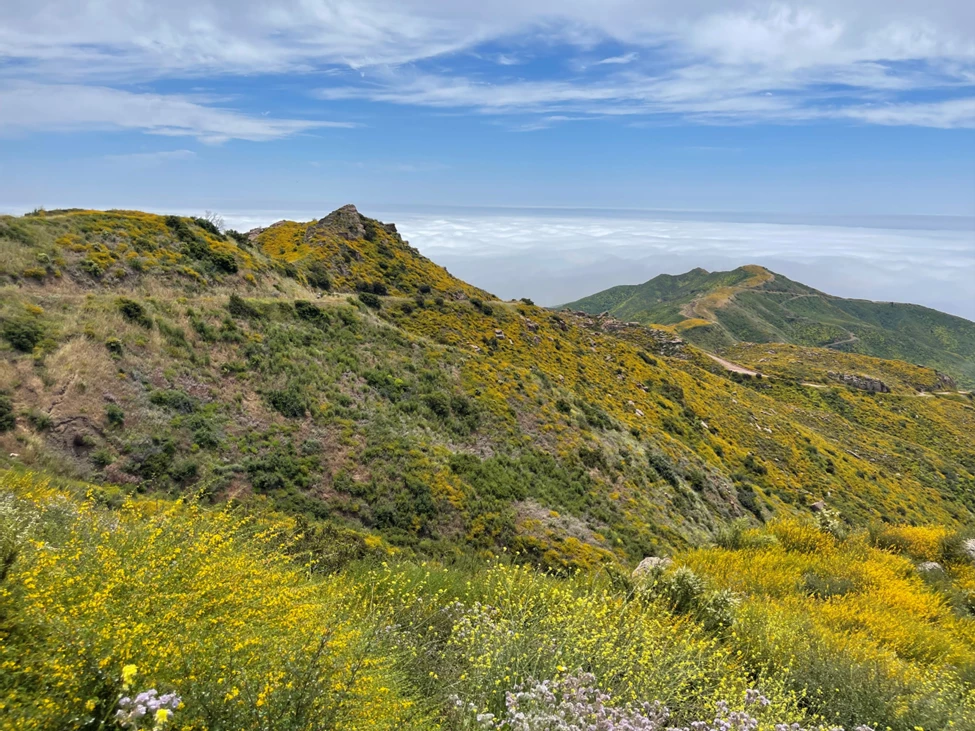
Photo by JP Hodnett.
Introduction
As a paleontologist working on projects the National Park Service, I have come to cherish and respect the vast record of ancient life preserved within park boundaries. Some of these parks and monuments are specifically dedicated because of their rich fossil heritage. Places like Petrified Forest National Park and Dinosaur National Monument are world-renowned fossil localities and attract many visitors each year to learn about the ancient life that occurred in those areas. There are many others, though, with similarly notable fossils that may be surprising to the casual visitor. My personal experiences with some of the large and iconic parks such as Yellowstone National Park, Grand Teton National Park, and Grand Canyon National Park showed that these parks have large numbers of important fossil localities. However, there is one unheralded paleontological park that stands out among NPS units in the number of documented fossil sites within its borders: Santa Monica Mountain National Recreation Area (SAMO), along the Pacific Coast in southern California.
Located just west of Los Angeles, SAMO was established in 1978 as a means of preserving a wide variety of natural and cultural resources from further encroachment of residential and commercial development. Though the recreation area is administered by the NPS, within its boundaries is a mosaic of federal, state, county, and city-operated public lands, as well as private properties. These land areas include rugged mountain highlands, steep canyons, chaparral woodlands, coastal wetlands, and beaches hosting a range of wildlife. A series of filming ranches such as Paramount Ranch (site of filming for “Gunsmoke” and “Westworld”) and Century Ranch (site of filming “Planet of the Apes” and the “M.A.S.H.” TV series) are now part of SAMO, due to the natural splendor and diverse landscapes that make for good filming. Part of what makes this natural splendor of SAMO possible is its complicated and jumbled geologic history.
Nearly a Thousand Fossil Sites (and Still Counting!)
With its close association with the metropolis of Los Angeles, the Los Angeles County Museum, and numerous university geology programs within the region, the Santa Monica Mountains, particularly the eastern and central regions, were heavily explored by scientists and general civilian collectors for decades, resulting in nearly a thousand fossil sites within the SAMO region (Koch et al., 2004). To date, this is one of the most fossiliferous paleontological resource park units within the NPS system!
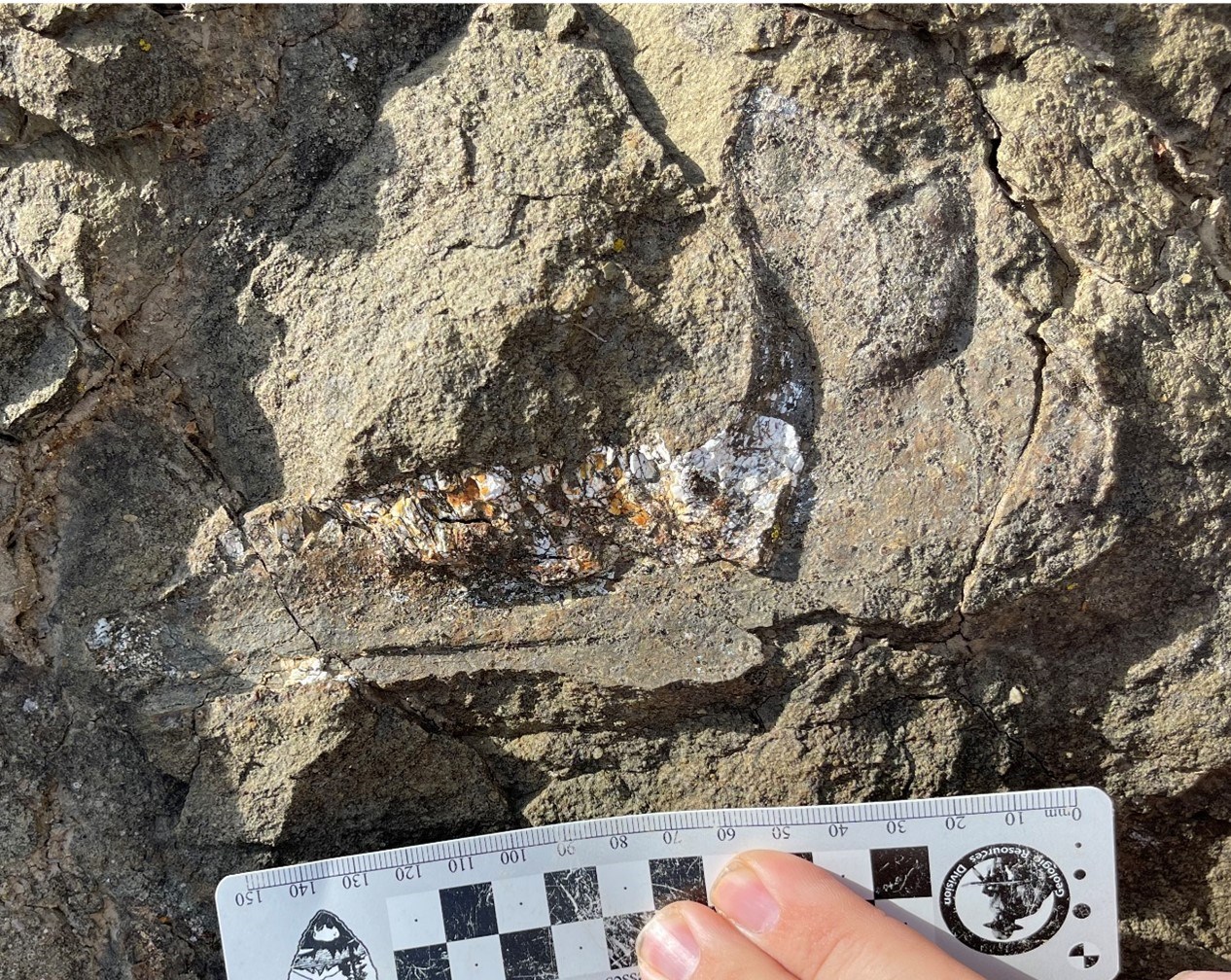
Photo by JP Hodnett.
The oldest fossils found in or adjacent to SAMO date to the Jurassic period in the Santa Monica Slate and consist of bivalves. Ammonites, bivalves, and foraminifera have been found in the Cretaceous Tuna Canyon and Chatsworth Formations. Gastropods, specifically species of Turritella are common in the Paleocene and Eocene sediments within SAMO (Koch et al., 2004). The Oligocene to lower Miocene Sespe Formation is known to have plant and terrestrial mammal fossils (Lander et al. 2013). An early Miocene extrusive event captured as the Conejo Volcanics helped create the unique landscapes we see at SAMO. The majority of the fossil beds within SAMO date to the. A large assortment of bivalves, gastropods, crustaceans, vertebrates (such as chondrichthyans, bony fish, sea lions, sea cows, and cetaceans), and plant fragments are well-known from the early–middle Miocene Topanga Canyon Formation. Until recently (see below) the late Miocene Calabasas Formation was known to have a limited assemblage of foraminifera, mollusks, and fish scales. The late Miocene Modelo Formation is well-known for invertebrate fossils but has also yielded complete fish and bird skeletons (Koch et al., 2004), among other rarities. Lastly, Quaternary sediments within SAMO have yielded Late Pleistocene vertebrate assemblages similar to those found in the nearby Rancho La Brea locality in Los Angeles (Koch et al., 2004).
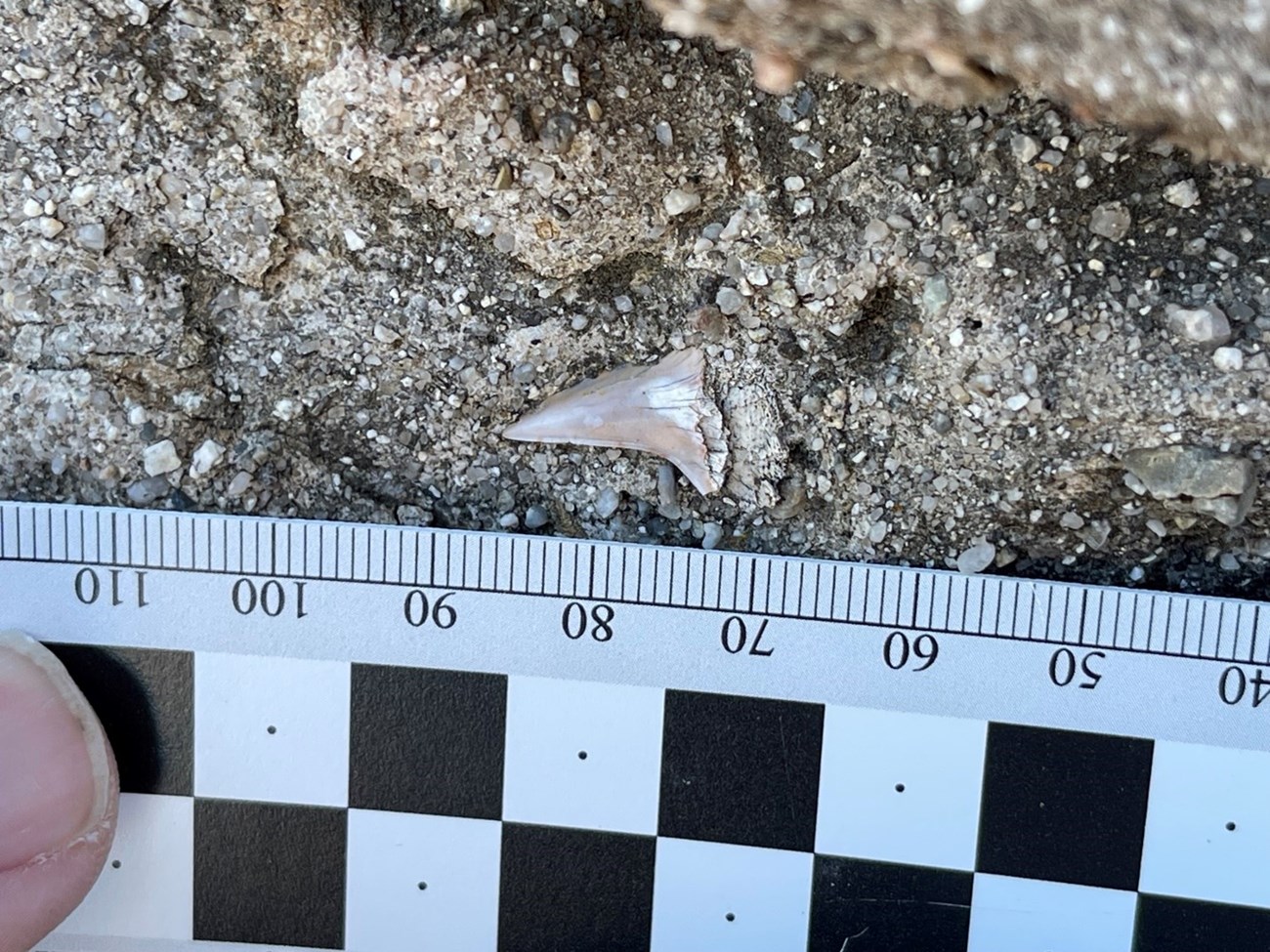
Photo by JP Hodnett.
2018 Woolsey Fire and Charbroiled Miocene Scallops
As mentioned above, the majority of the fossil localities and their resources were recorded towards the eastern and central regions of SAMO, most likely due in large part to their accessibility for early exploration and collecting in the early-mid 20th century. Before and after the establishment of SAMO, additional fossils were found as part of private mitigation surveys for land development and infrastructure construction (Lander et al. 2013). The western section of SAMO only had a few known localities, primarily from geological surveys by Thomas Dibblee (1982, 1993). This all changed in November 2018, when the Woolsey Fire ignited and burned 96,949 acres, including 88% of the federal parkland in SAMO. The fire also destroyed the NPS SAMO collection facility and sites like Paramount Ranch. An assessment of the Woolsey fire damage to fossil resources at SAMO was requested by park resource management staff to identify areas where fossils were most impacted by the fire. This in turn was also an opportunity to identify new fossil localities in the western portions of SAMO.
The two-part Woolsey Post-Fire Assessment of Paleontological Resources began in May 16 to May 26, 2023, and wrapped up from December 4 to December 14, 2023. The natural and cultural resources staff at SAMO were extremely helpful with this assessment and much of the success of this project is credited to their experience and knowledge of the region and their diligence in the field. The first day of fieldwork I worked with botanist Mark Mendelson and his vegetation survey field team along Zuma Ridge Motorway, a north-to-south trail that follows Zuma Ridge to near the Pacific Coast and crosses over the Oligocene Sespe Formation and Miocene Vaqueros Formation. Initially, we encountered a few fossil localities, but many were already overgrown due to the previous historic wet winter. However, Mark’s vegetation field crew encountered outcrops of marine sandstones of the Vaquero Formation that had large scallops and gastropods along a lower ridge from the trail. Using their information, Mark and I relocated the outcrops they observed and started finding not only the fossils the vegetation crews spotted but also evidence that these rocks were not in a normal state. Some of the initial sandstones and fossils we encountered looked a different color compared to other outcrops of the Vaqueros Formation above us. They were tinged with pink and the fossil shells, normally whitish in color, were a bluer gray. As we moved further down the ridge, the sandstones had scorched sooty edges, and the fossil shells became darker. Eventually we hit an outcrop where the shell beds appeared essentially charcoaled, burnt to a crisp. Surveying the opposite ridge of this first locality, we would discover an outcrop that had the shells burned completely away, only leaving the impressions of the shells behind. This area was the first evidence that the Woolsey Fire had either destroyed or altered fossil resources.
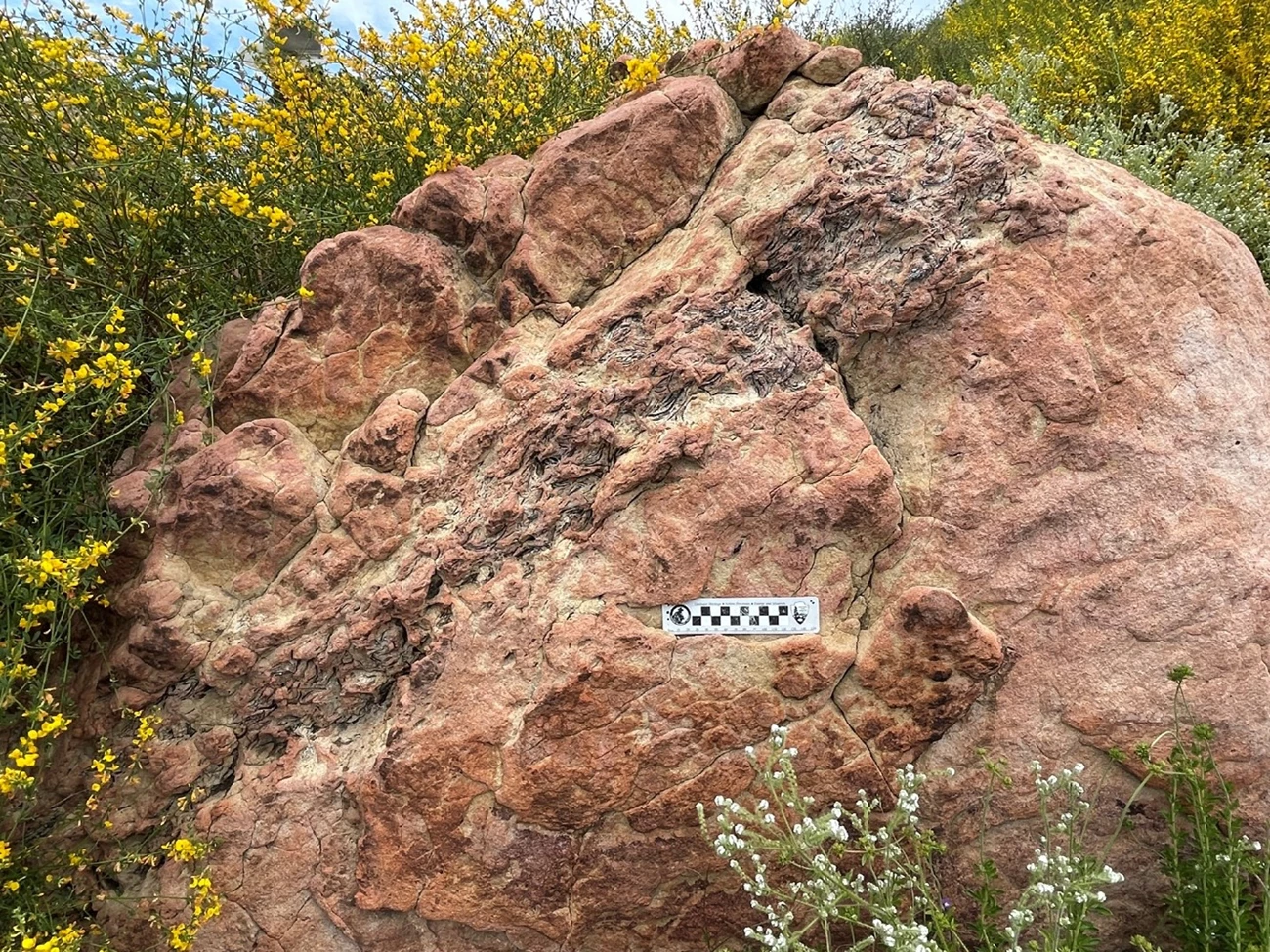
Photo by JP Hodnett.
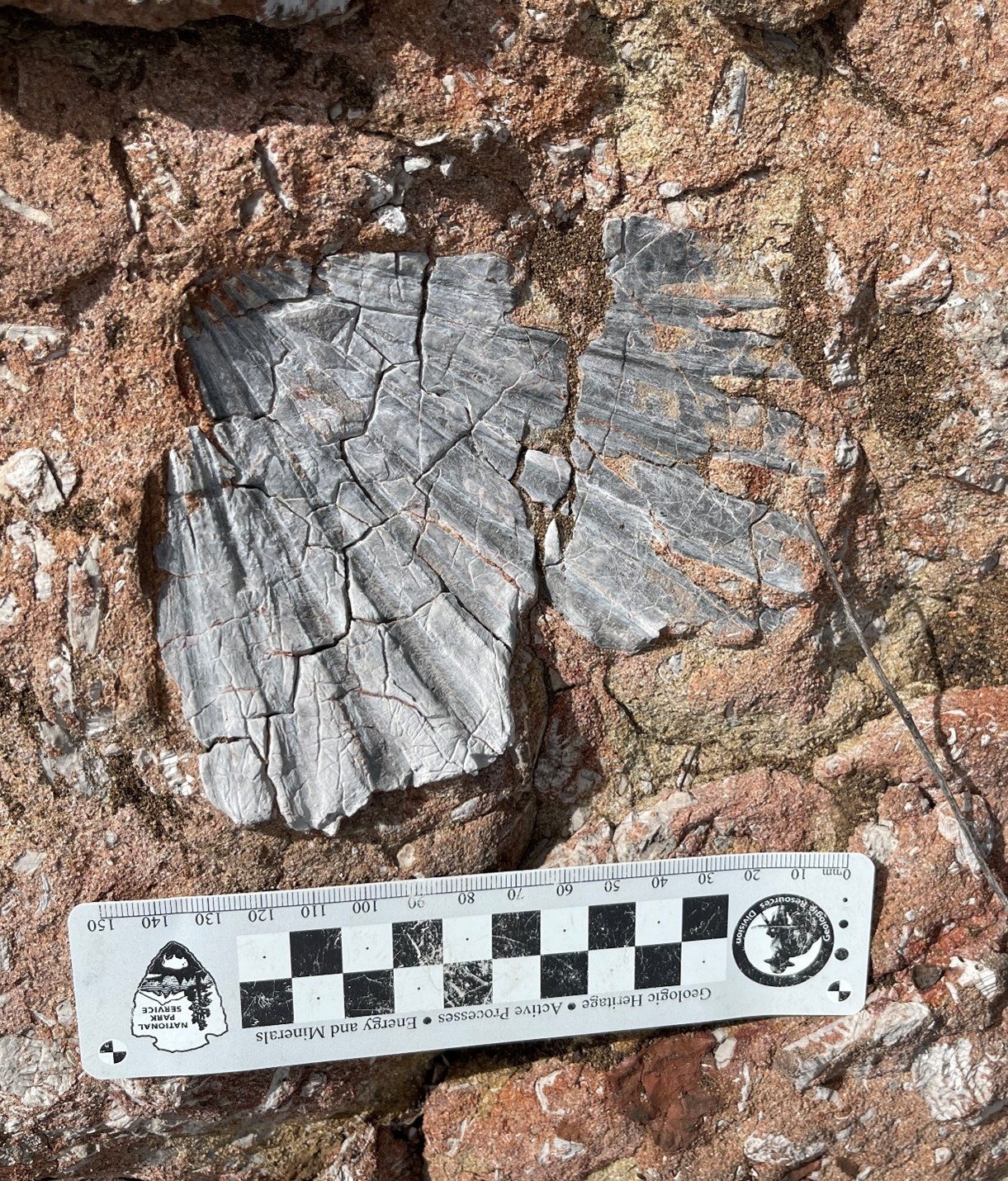
Photo by JP Hodnett.
Though roughly five years have passed since the Woolsey Fire burned through the area, our assessment would go on to identify a total of six localities within SAMO that showed evidence of minor to severe damage of non-renewable fossil resources.
SAMO is a Fishy Place for Filming Movies
The gap between when the Woolsey Fire occurred and the start of the fire assessment on paleontological resources at SAMO has most likely obscured the full impact the disaster had to fossils. The recreation area was healing with natural erosional processes and regrowth of vegetation, which was accelerated by historic winter precipitation, wiping away the majority of the evidence of fire damage. However, while we were walking the trails and crossing the terrains of SAMO, the scars were still evident in areas where fossils occur and made me wonder what was lost in both the fire and the years following.
However, there was an exciting by-product of hunting down locations effected by the Woolsey Fire, new fossil sites! Many of the areas we explored within the NPS jurisdictional lands that were affected by the Woolsey Fire had little record of paleontological exploration. As such we uncovered a total of 155 new fossil localities within the western and northern sections of the SAMO boundary.
One particular geologic horizon, the Calabasas Formation, was particularly fruitful when we encountered it. Previously, this formation was noted for small fossils of foraminifera, diatoms, plant fragments, reworked mollusks, and fish scales, most of which are known towards the eastern side of SAMO and Los Angeles (Yerkes and Campbell 1979). Two localities we encountered in the Calabasas Formation wound up containing partial to near complete fish skeletons, a first for this geologic horizon. This important discovery could potentially help us understand how the fish fauna transitioned from a shallow offshore marine setting to the deeper water habitats seen in the overlying younger middle to late Miocene Modelo Formation, which is known also for complete fish skeletons (David 1943).
In addition, one of the two of the Calabasas Formation fish localities was discovered at Paramount Ranch. Paramount Ranch has a long history of filming movies and TV shows, particularly with a western theme. Its old western town studio lot was still in use in the years prior to the 2018 Woolsey Fire, which decimated all but a few buildings. Unbeknownst to the film makers, visitors, and SAMO staff, the sediments they walked on were once the bottom of an ocean with a rich fossil heritage. As part of the assessment process, we also collected a few fossil samples that we hope will seed a new paleontological resource collection for SAMO and, out of the ashes of the Woolsey Fire, inspire new research ventures within Santa Monica Mountains National Recreation Area. One of the important outcomes associated with field paleontological resource assessments is the potential for new fossil discoveries which expand our understanding of these park resources, even after devastation by natural forces.
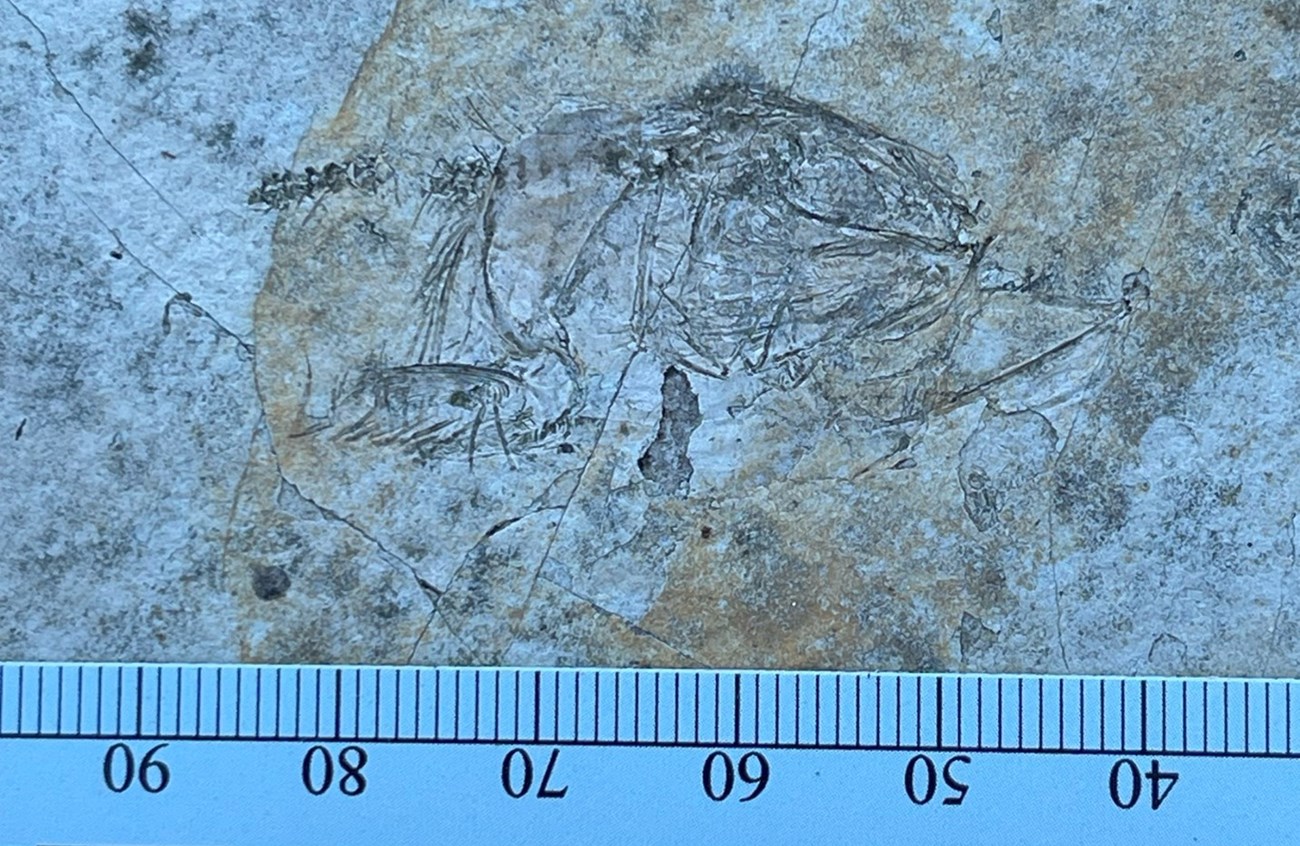
Photo by JP Hodnett.
References
-
David, L. R. 1943. Miocene fishes of southern California. Geological Society of America, Boulder, Colorado. Special Paper 43.
-
Dibblee, T. W., Jr. 1982. Regional geology of the Transverse Ranges Province of southern California. Pages 7–26 in D. L. Fife and J. A. Minch, editors. Geology and mineral wealth of the California Transverse Ranges: Mason Hill volume. South Coast Geological Society, Santa Ana, California. Annual symposium and guidebook 10.
-
Dibblee, T. W., Jr. 1993. Geologic map of the Malibu Beach Quadrangle, Los Angeles County, California. Dibblee Geological Foundation, Santa Barbara, California. Dibblee Foundation Map 47. Scale 1:24,000.
-
Koch, A. L., V. L. Santucci, and T. R. Weasma. 2004. Santa Monica Mountains National Recreation Area paleontological survey. NPS/NRGRD/GRDTR-04/01. National Park Service, Geologic Resources Division, Denver, Colorado.
-
Lander, E. B., V. L. Santucci, and J. S. Tweet. 2013. Society of Vertebrate Paleontology 73rd annual meeting field trip volume and guidebook on Arikareean and Hemingfordian mammalian vertebrate paleontology of the Santa Monica Mountains National Recreation Area, Los Angeles County, Southern California.
-
Yerkes, R. F. and R. H. Campbell. 1979. Stratigraphic nomenclature of the central Santa Monica Mountains, Los Angeles County, California. U.S. Geological Survey, Washington, D.C. Bulletin 1457-E.
Related Links
-
Santa Monica Mountains National Recreation Area (SAMO), California—[SAMO Geodiversity Atlas] [SAMO Park Home] [SAMO npshistory.com]
Last updated: April 3, 2024
